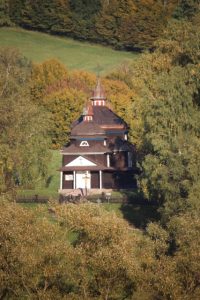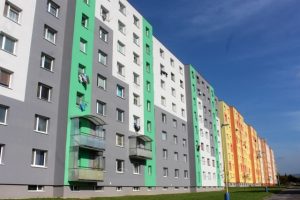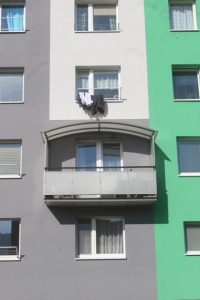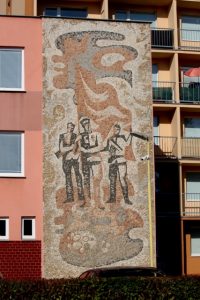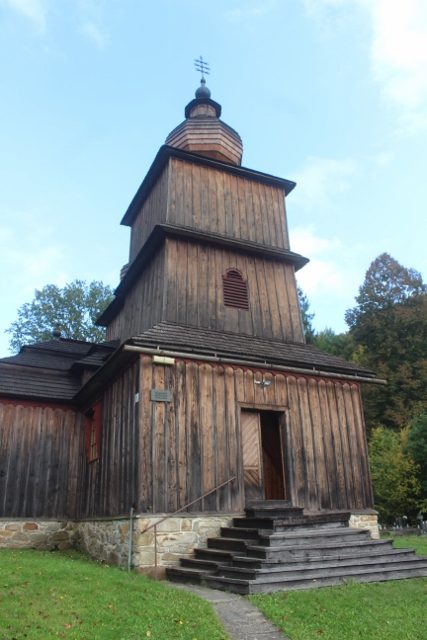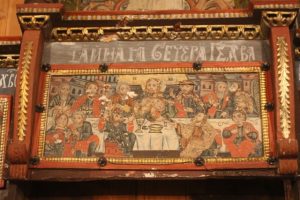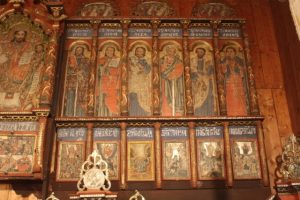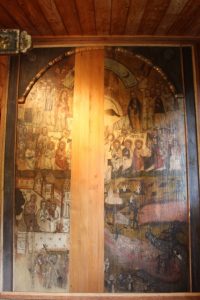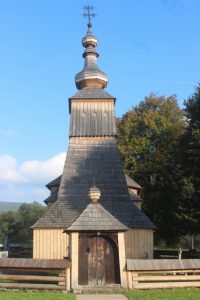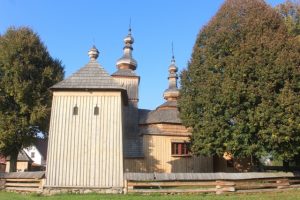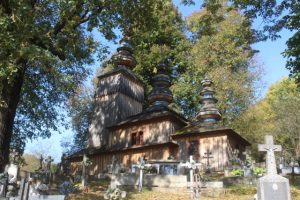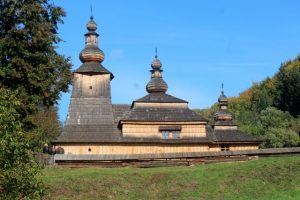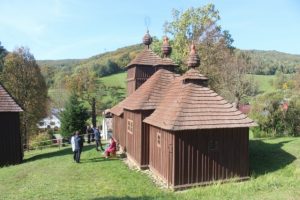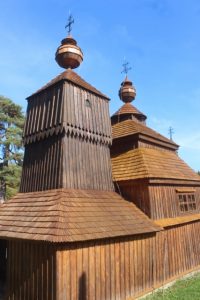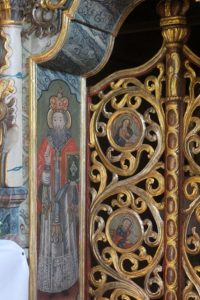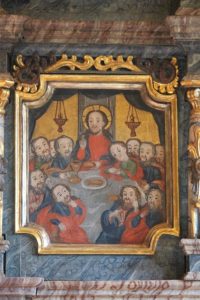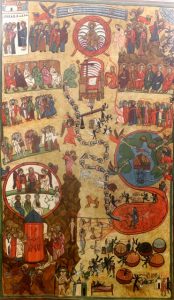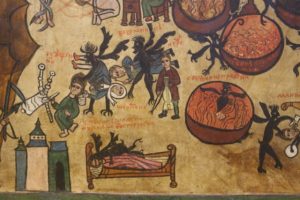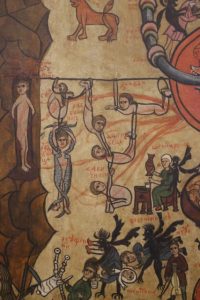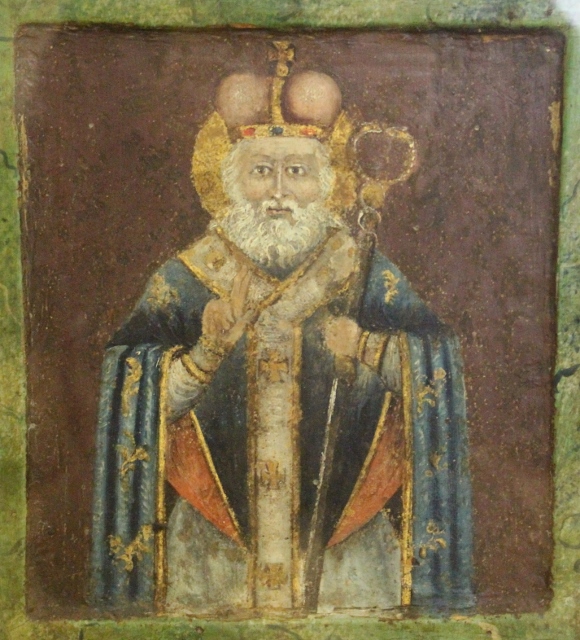The area around Svidnik has a range of beautiful wooden churches, too, some of which have great frescoes inside.
Half-an-hour further east from Bardejov, equally close to the Polish border, is Svidnik, another one of those towns where soviet-style architecture has left a mark. It is really a small town, yet, wide avenues separate the mono-block neighbourhoods, interspersed with poorly maintained shopping areas. The mono-blocks, on the other hand, have been painted over, and – important development, but only for palati-affectionados – where traditionally people would close in the balcony to provide an extra room, here the occasional balcony has been added on the outside of the building!
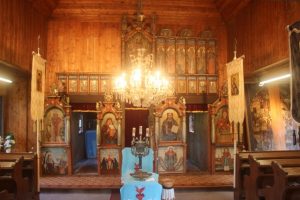
inside, the iconostasis, with half of the apostles, and all the way to the right the Last Judgement painting
Svidnik has its own share of wooden Greek-Catholic churches, even more than around Bardejov. And once again, the tourist office provides a map, with telephone numbers, just in case. But for the Dobroslava church, which is closed, of course, we don’t need the telephone: the priest lives next door, and is working his apple orchard. Reluctantly – why are they always so reluctant? -, he agrees to open church. First thing he does is pointing at a little basket, indicating he expects a donation to the church – and no coins, please. Then he switches on the lights, and starts an audio recording with sacred music, and eventually, a commentary in English about the church. Well organised, this! The church sports an almost complete iconostasis – just a few apostles missing – and the jewel in the crown, a fresco of the Last Judgment, one of my favourite topics in churches, especially the corner in which hell is depicted. Which, once again, has been creatively exercised here. More photos here.
None of the other churches we visit in the afternoon are open. The church in Ladomirova, with a variety of cupulas and a square bell tower, a later addition no doubt. The beautifully named Temple of the Protection of the Mother of God church of Nizny Komarnik we see from the distance only, bathing in bright sunlight. The church in Vishny Komanik, about as far north as we went, is surrounded by trees, and difficult to photograph. And equally closed.
We continue the next morning, a Sunday. Reckoning that, on a Sunday, the churches will be open, all right – if not on a Sunday, when will they? And indeed, when we arrive at the church of Korejovce, there are lots of cars parked, also lots of people around the church. Mass – or is it Liturgy? -is being said, but with such a small church, and possibly Corona limitations, too, many worshippers have to do with a place outside. Which, for many, is actually quite OK, so they can keep up the social contacts with other parishioners without disturbing the priest inside. We decide that we, too, will not disturb the priest, and even though the church is open, we stick to the outside only. In Mirola it is not different, the church is open but not really, not for us tourists.
But phoning Helena, the custodian of the UNESCO-listed church in Bodruzal, actually works. Although she had been at Mass, she tells us that she came forthwith when she realised there were tourists at her church. And then she tells us to pay 10 Euros, and if we perhaps want to buy postcards or magnets of the church? And then she switches on the English recording, similar to the one the day before, about the church. Which is, again, wonderfully painted, not only the iconostasis, but also the walls, with another of these magnificent Last Judgments. This is why we come to see these churches! More photos here.
And just in case you hadn’t seen any of the wooden churches in the area, back in Svidnik is the post-soviet version, bright yellow and grey, not too dissimilar architecture to what we had seen so far…
Also back in Svidnik we visit the local art museum, to see a few more icons, from the surrounding churches, as well as some 20th Century paintings from the region. A strange contrast, and also, once more, a strange museum visit, a bit like in Martin a week earlier: when we got there we were convinced that the place was closed, but no, our presence had been noticed, the entrance door was being unlocked, the lights switched on, and we were free to wander around. And when we left, lights off, and door hermetically locked again.
Next: also in this region, the Dukla Pass.
